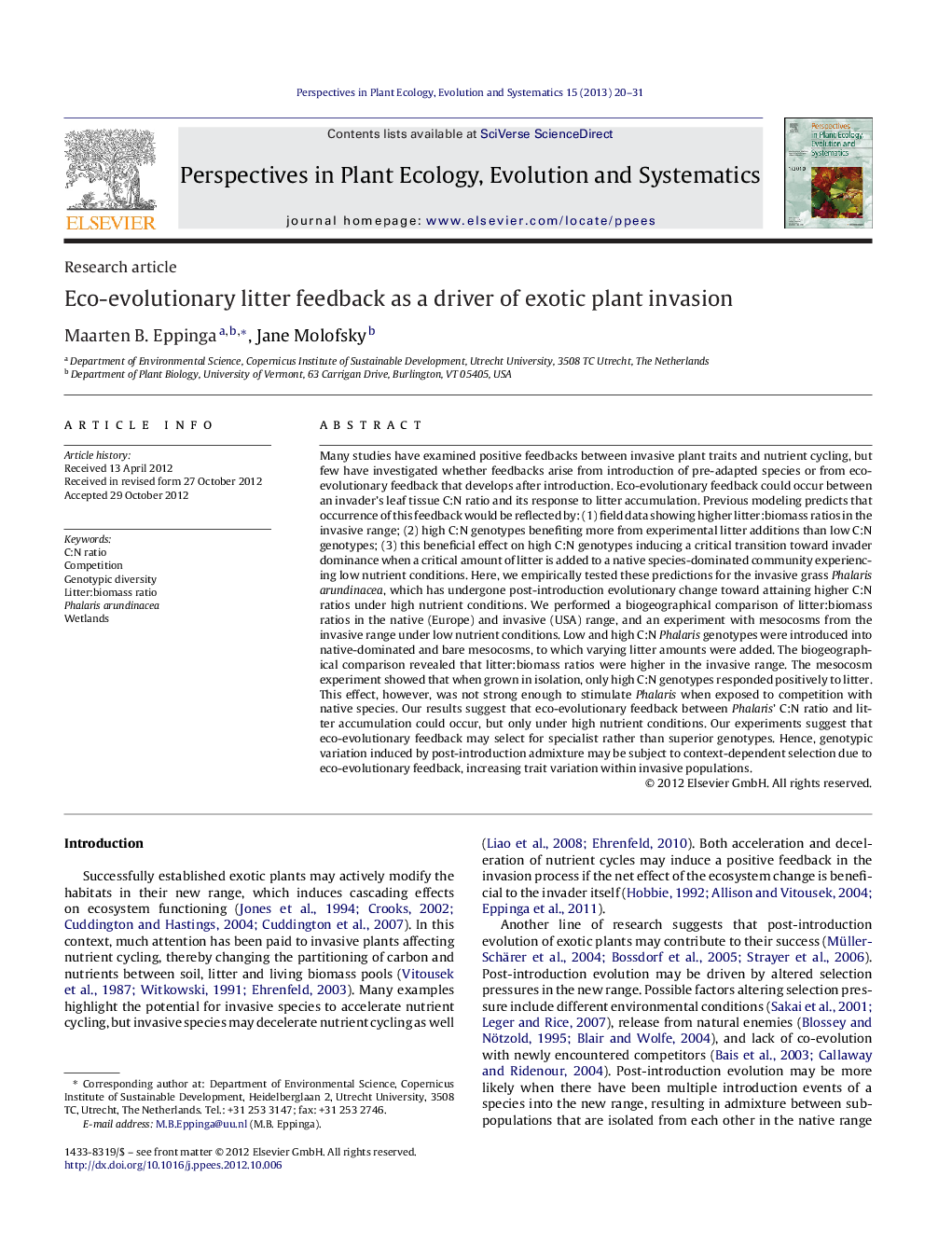| کد مقاله | کد نشریه | سال انتشار | مقاله انگلیسی | نسخه تمام متن |
|---|---|---|---|---|
| 4400981 | 1307041 | 2013 | 12 صفحه PDF | دانلود رایگان |

Many studies have examined positive feedbacks between invasive plant traits and nutrient cycling, but few have investigated whether feedbacks arise from introduction of pre-adapted species or from eco-evolutionary feedback that develops after introduction. Eco-evolutionary feedback could occur between an invader's leaf tissue C:N ratio and its response to litter accumulation. Previous modeling predicts that occurrence of this feedback would be reflected by: (1) field data showing higher litter:biomass ratios in the invasive range; (2) high C:N genotypes benefiting more from experimental litter additions than low C:N genotypes; (3) this beneficial effect on high C:N genotypes inducing a critical transition toward invader dominance when a critical amount of litter is added to a native species-dominated community experiencing low nutrient conditions. Here, we empirically tested these predictions for the invasive grass Phalaris arundinacea, which has undergone post-introduction evolutionary change toward attaining higher C:N ratios under high nutrient conditions. We performed a biogeographical comparison of litter:biomass ratios in the native (Europe) and invasive (USA) range, and an experiment with mesocosms from the invasive range under low nutrient conditions. Low and high C:N Phalaris genotypes were introduced into native-dominated and bare mesocosms, to which varying litter amounts were added. The biogeographical comparison revealed that litter:biomass ratios were higher in the invasive range. The mesocosm experiment showed that when grown in isolation, only high C:N genotypes responded positively to litter. This effect, however, was not strong enough to stimulate Phalaris when exposed to competition with native species. Our results suggest that eco-evolutionary feedback between Phalaris’ C:N ratio and litter accumulation could occur, but only under high nutrient conditions. Our experiments suggest that eco-evolutionary feedback may select for specialist rather than superior genotypes. Hence, genotypic variation induced by post-introduction admixture may be subject to context-dependent selection due to eco-evolutionary feedback, increasing trait variation within invasive populations.
Journal: Perspectives in Plant Ecology, Evolution and Systematics - Volume 15, Issue 1, 20 February 2013, Pages 20–31